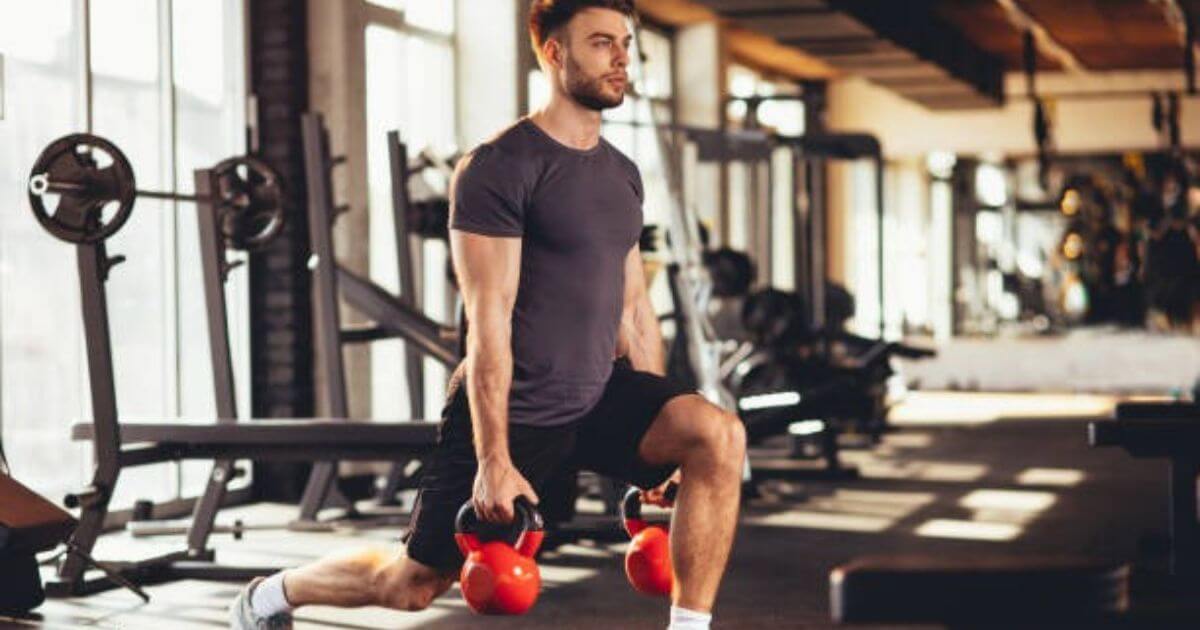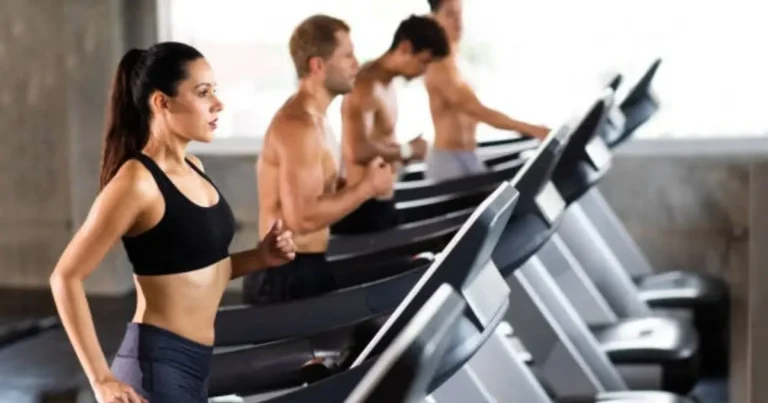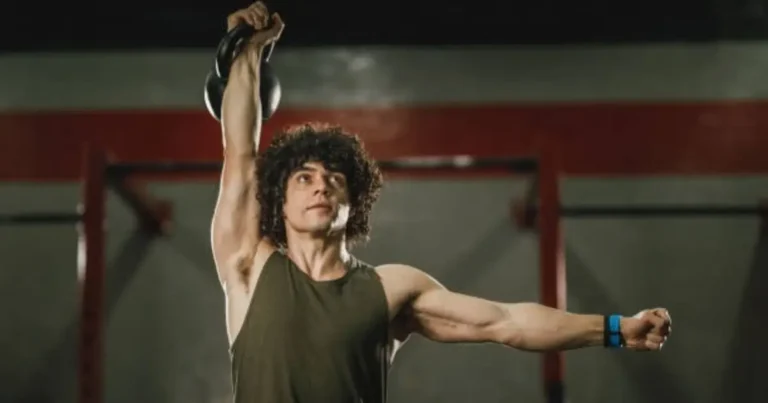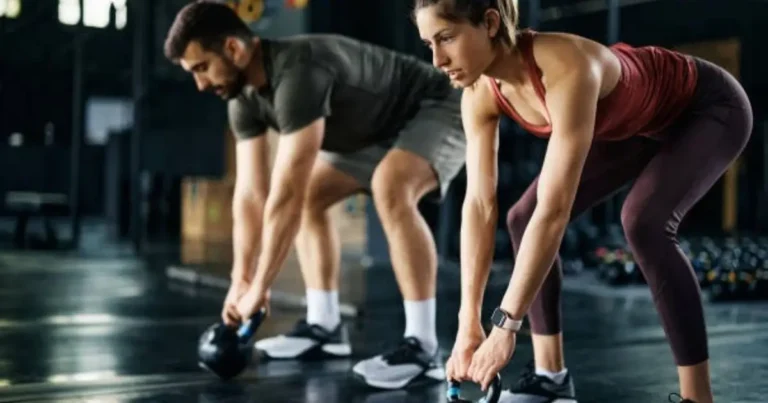The Ultimate Kettlebell Leg Workout: Build Strength, Power & Muscle
Move beyond basic squats and lunges—this kettlebell leg workout turns a single weight into a dynamic lower-body powerhouse. By leveraging swings, offset loads, and goblet positions, you’ll forge explosive hips, ironclad stability, and sculpted quads, glutes, and hamstrings.
Table of Contents
Why kettlebells excel at leg training:
- Goblet Squat Advantage: Promotes upright posture, deep squat mechanics, and core engagement.
- Swing Power: Unmatched for ballistic hip extension—your glutes and hamstrings will thank you.
- Offset Loading: Challenges balance and core in lunges and single‑leg RDLs.
- Grip Integration: Forces total‑body tension, linking upper and lower chains.
What This Guide Delivers: Perfect form cues and visuals for each key move, weight‑selection charts, safety essentials, and goal‑driven workout routines for strength, hypertrophy, and glute/ham focus.
Kettlebell Leg Training Essentials: Weight Selection & Safety
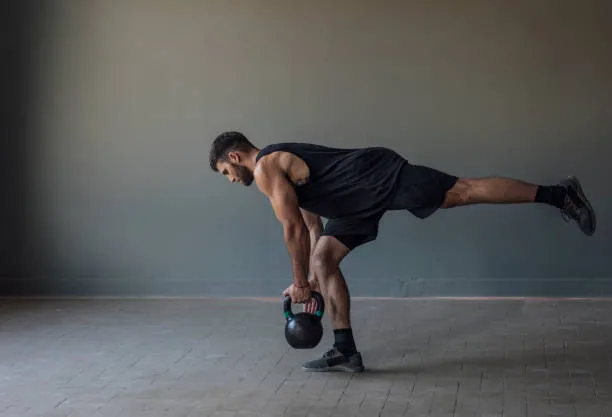
Choosing the Right Kettlebell Weight(s)
Leg moves demand varying loads. Start conservative to master pattern before upping kilos.
| Exercise | Men (kg/lb) | Women (kg/lb) |
|---|---|---|
| Two‑Handed Swing / Goblet Squat | 16–24 kg (35–53 lb) | 8–16 kg (18–35 lb) |
| Lunges / Single‑Leg RDL | 12–20 kg (26–44 lb) | 6–12 kg (13–26 lb) |
| Romanian Deadlift (RDL) | 16–24 kg (35–53 lb) | 8–16 kg (18–35 lb) |
Tip: If form falters, drop 4–8 kg and focus on technique before increasing weight.
Safety Fundamentals for Kettlebell Leg Work
- Master the Hip Hinge vs. Squat: Hip dominants like swings/RDLs require hips back and neutral spine; squats demand upright chest and knees tracking toes.
- Neutral Spine: Keep shoulders over hips; avoid rounding or excessive arch.
- Foot & Knee Alignment: Mid‑foot grounding, knees in line with toes—no valgus collapse.
- Controlled Eccentrics: Lower into squats and lunges deliberately (3‑5 sec), protecting joints.
- Clear Workout Space: Ensure 6×6 ft free zone to swing and step safely.
Master the Key Kettlebell Leg Exercises (The Pillars)
Kettlebell Goblet Squat
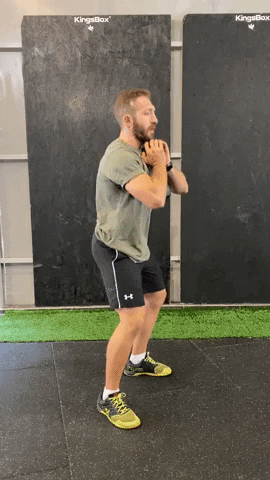
Why It’s Effective: Teaches deep, balanced squat; loads quads, glutes, core.
Steps:
- Hold bell by horns at chest, elbows tucked.
- Push hips back, bend knees, descend until thighs ≥ parallel.
- Drive through heels to stand, keep chest tall.
Breathing: Inhale on descent, exhale driving up.
Common Mistakes: Elbows flaring—keep them inside knees; leaning forward—brace core.
Regression/Progression: Use lighter weight or front squat with two KBs.
Kettlebell Two‑Handed Swing

Why It’s Effective: Builds explosive hip extension, targets glutes/hamstrings.
Steps:
- Hinge hips, soft knees, KB between feet.
- Swing back, then snap hips forward, thrusting bell to chest height.
- Let bell descend under control; repeat.
Breathing: Exhale forcefully at top.
Mistakes: Squatting—focus on hip hinge; using arms—lead with hips.
Prog: Single‑arm swings or alternating.
Kettlebell Lunge Variations
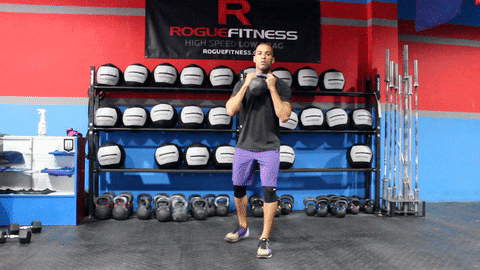
Why It’s Effective: Unilateral strength, balance, and core stability.
Steps (Reverse Lunge):
- Hold KB in goblet or rack position.
- Step back, lower until front thigh ≈ parallel, back knee close to floor.
- Press front heel to return.
Breathing: Exhale rising.
Mistakes: Knee past toe—increase hip hinge; wobble—narrow stance.
Variants: Forward, lateral, walking lunges.
Kettlebell Romanian Deadlift (RDL)

Why It’s Effective: Loads hamstrings and glutes under tension.
Steps:
- Hold two KBs or one between feet.
- Hinge hips, slide KBs down shins, maintain neutral spine.
- Feel stretch in hamstrings, then hip‑drive back to stand.
Breathing: Inhale lowering, exhale rising.
Mistakes: Rounded back—brace core; bending knees too much—emphasize hinge.
Progression: Single‑leg RDL.
Kettlebell Single‑Leg RDL

Why It’s Effective: Challenges balance, single‑leg strength, core stability.
Steps:
- Hold KB in opposite hand, hinge on standing leg.
- Flutter non‑working leg back, lower KB toward floor.
- Use hamstring and glute to return upright.
Breathing: Inhale down, exhale up.
Mistakes: Rotating hip—square hips forward; collapsing arch—brace foot.
Regression: KB in both hands; progress by adding pauses or lowering bell further.
Kettlebell Leg Workout Routines Tailored To Your Goals
Beginner Kettlebell Leg Workout (Fundamental Focus)
Frequency: 1–2×/week
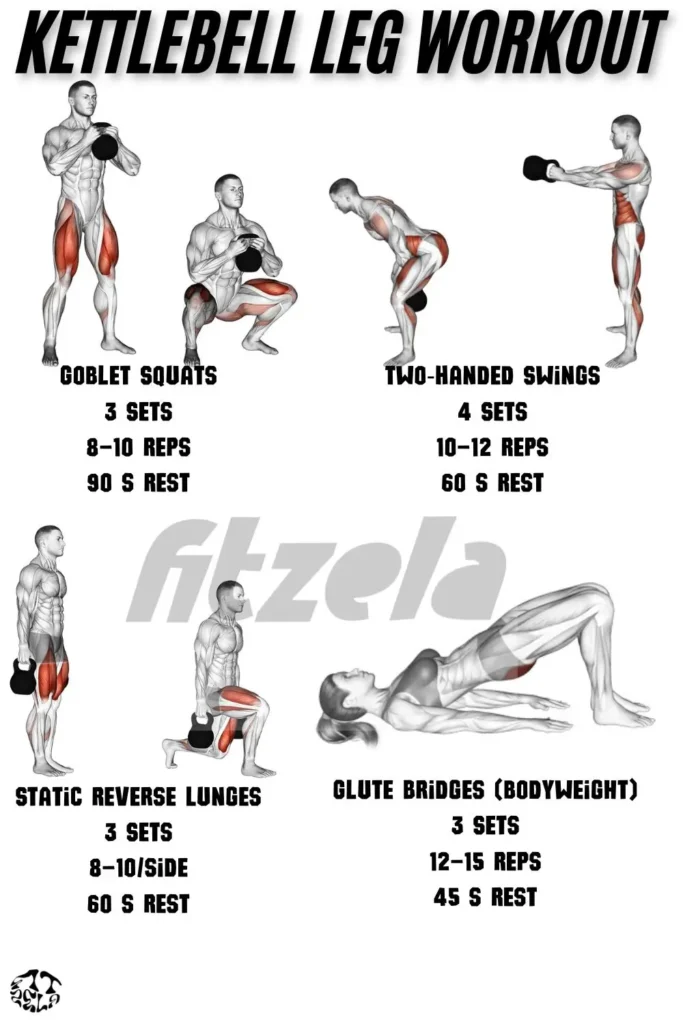
| Exercise | Sets | Reps | Rest |
| Goblet Squats | 3 | 8–10 | 90 s |
| Two‑Handed Swings | 4 | 10–12 | 60 s |
| Static Reverse Lunges | 3 | 8–10/side | 60 s |
| Glute Bridges (bodyweight) | 3 | 12–15 | 45 s |
Kettlebell Leg Workout for Strength
Frequency: 1–2×/week
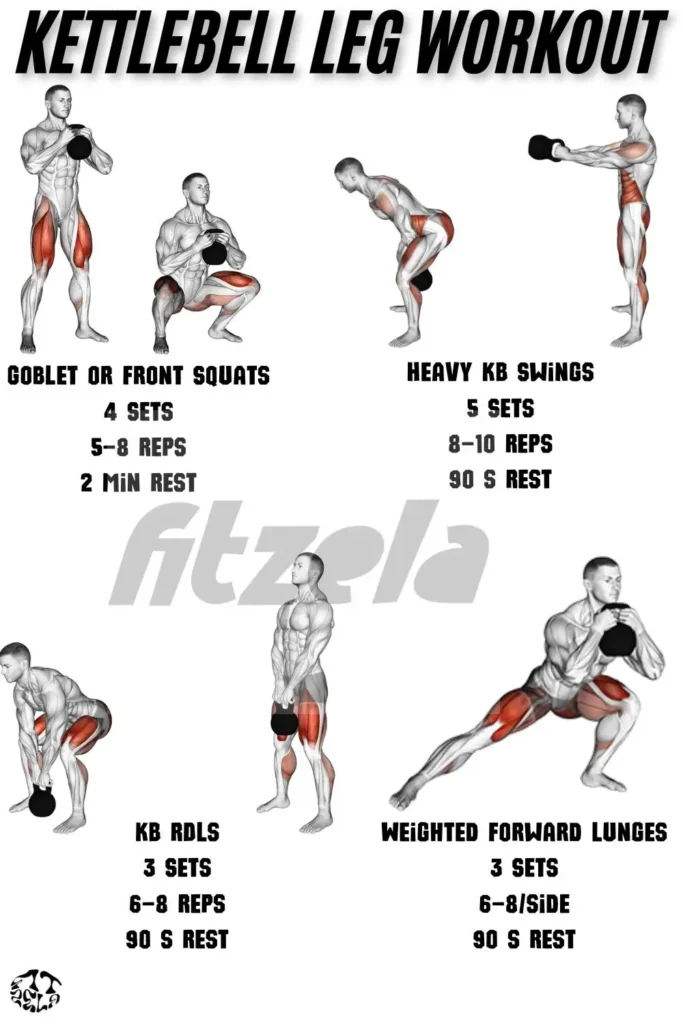
| Exercise | Sets | Reps | Rest |
| Goblet or Front Squats | 4 | 5–8 | 2 min |
| Heavy KB Swings | 5 | 8–10 | 90 s |
| KB RDLs | 3 | 6–8 | 90 s |
| Weighted Forward Lunges | 3 | 6–8/side | 90 s |
Kettlebell Leg Workout for Muscle Growth/Endurance
Frequency: 1–2×/week Circuit (3–4 rounds):
- Goblet Squats ×12
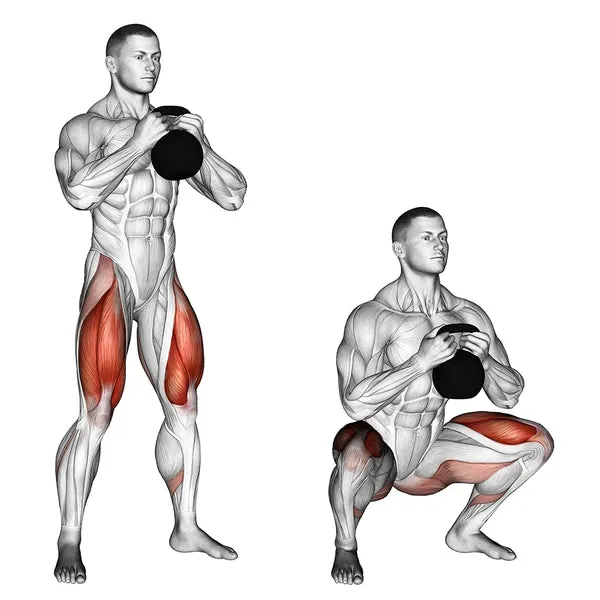
- KB Swings ×15
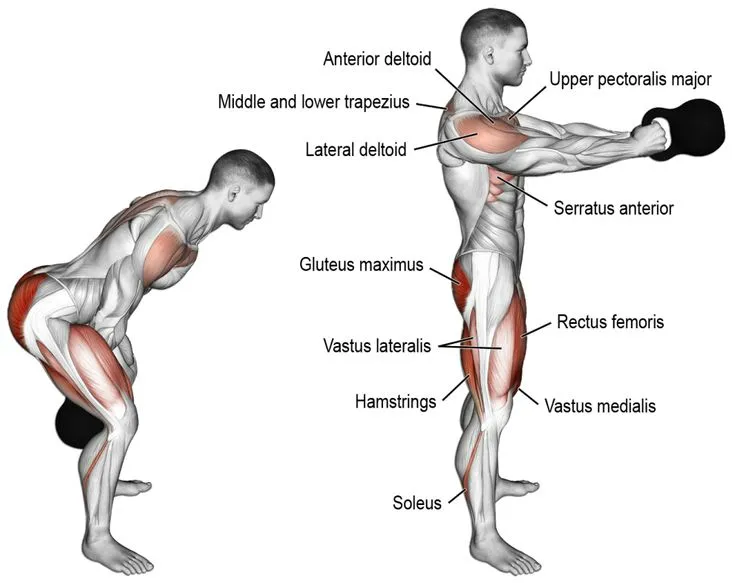
- Walking Lunges ×10/side
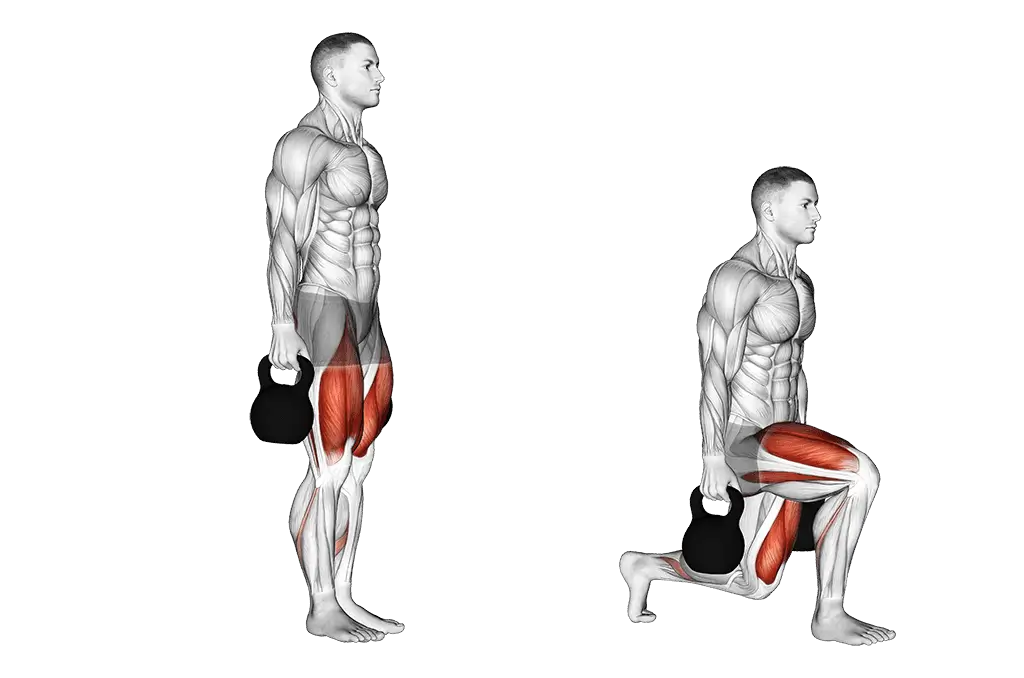
- Single‑Leg RDL ×8/side
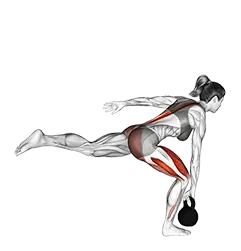
- Rest 60 s
Kettlebell Glute & Hamstring Focused Workout
Frequency: 1×/week
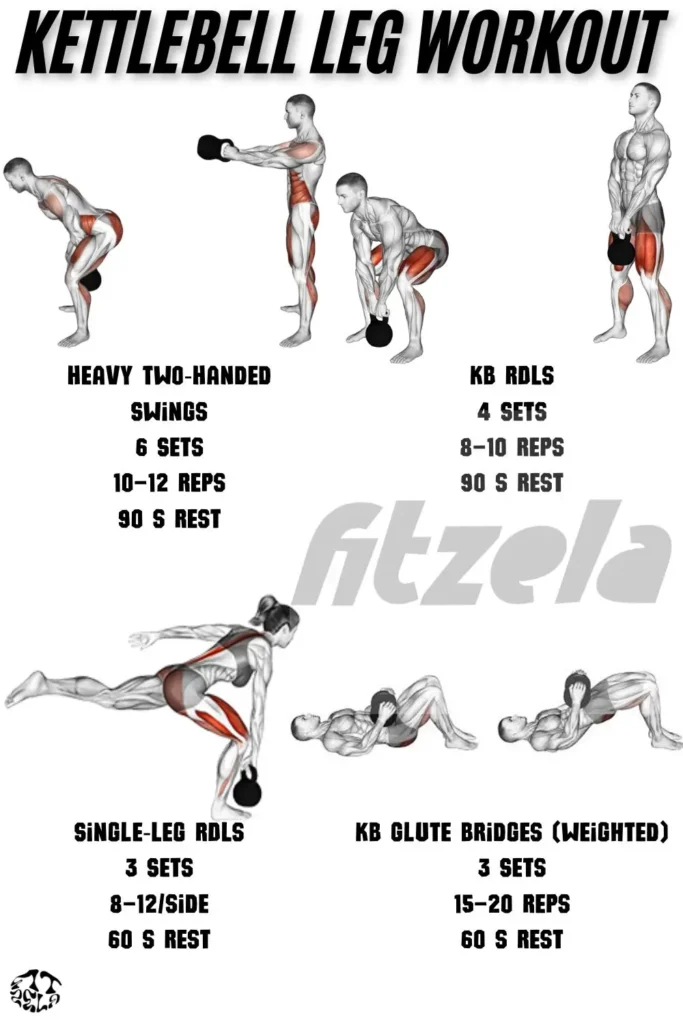
| Exercise | Sets | Reps | Rest |
| Heavy Two‑Handed Swings | 6 | 10–12 | 90 s |
| KB RDLs | 4 | 8–10 | 90 s |
| Single‑Leg RDLs | 3 | 8–12/side | 60 s |
| KB Glute Bridges (weighted) | 3 | 15–20 | 60 s |
Programming Your Kettlebell Leg Days
- Weekly Splits: Integrate into full‑body (2–3×) or upper/lower splits.
- Recovery: Allow 48–72 hours before re‑loading intense leg day.
- Progressive Overload: Increase weight, add reps/sets, or reduce rest; introduce advanced variations (e.g., jump squats, loaded carries).
Essential Kettlebell Leg Workout Warm‑Up & Cool‑Down
Dynamic Warm‑Up (5–7 min)
- Hip Circles
- Leg Swings (front/side)
- Bodyweight Squat-to-Stand
- Glute Activation (clamshells, bridges)
- Practice Goblet Squat & RDL pattern without weight
Cool‑Down & Stretching (5 min)
- Hamstring Stretch
- Quad & Hip Flexor Stretch
- Pigeon Pose (glute)
- Calf Stretch
- Deep Hip Flexor Lunge
Frequently Asked Questions (FAQ)
What weight should I use for swings vs. lunges? Refer to our weight chart: heavier for swings/squats, lighter for single‑leg work.
Can kettlebells build big legs? Yes—by progressively overloading and combining squats, swings, and unilateral drills.
Are swings enough for leg development? Great for posterior chain, but pair with squats and lunges for balanced development.
Is kettlebell leg training safe for knees? Absolutely, when you maintain knee‑to‑toe alignment and controlled eccentrics.
Goblet Squat vs. Front Squat with KBs? Goblet is beginner‑friendly; front squat (two KBs) allows more load but requires stronger core.
Conclusion: Forge Powerful Legs with Kettlebell Training
This kettlebell leg workout unleashes strength, power, and muscle through dynamic, compound movements. Prioritize form, progress methodically, and stay consistent.


